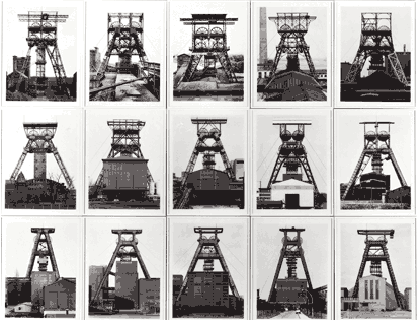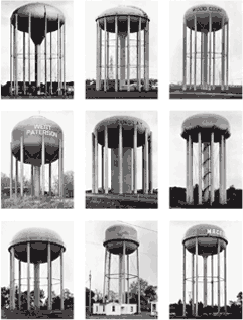The New Topographics Photos









What is The New Topographics?

‘The New Topographics: Photographs of a Man-Altered Landscape’ was an exhibition at the George Eastman museum in Rochester, New York. This exhibition was created by William Jenkins in 1975 and included the work of various photographers such as:
- Frank Gohlke
- Robert Adams
- John Schott
- Lewis Baltz
- Stephen Shore
- Joe Deal
- Nicholas Nixon
- Bernd and Hilla Becher
- Henry Wessel
The word ‘topographic’ refers to the arrangement of physical features in an area, therefore, The New Topographics is a way of stating that the arrangement of physical features have been changed. In addition, The New Topographics was a reaction to the Post-war American Landscape, where the world was becoming increasingly suburbanised and landscape photography was becoming progressively romanticised and idealised. Moreover, the purpose of this exhibition was to highlight the effects of human intervention on the environment and, as a result, this exhibition significantly contributed to conservationism, a movement which aims to conserve and protect natural resources and wildlife, as it made people realise what the world was becoming.
Key Features of The New Topographics
The New Topographics inspired the beginning of the genre Urban Landscape and these images often included features such as petrol stations, industrial parks, trailer homes, industrial buildings and houses. These images brought attention to landscapes and areas which people see everyday but never think twice about in an attempt to protect natural landscapes from human intervention. The industrial features in these images are often paired with natural landscapes in the background to create contrast between natural and man-made.
Case Study of New Topographics Photographer
Robert Adams – The New West


Robert Adams, a photographer who was part of The New Topographics, published a book in 1974 named ‘The New West’. This was a book containing landscapes along the Colorado Front Range (Mountain Range) and it is regarded as a classic book of photography. Adams created this book as a way of documenting the development of freeways, mobile homes, low-rise business buildings and signs in the suburbs, rather than romanticising it. The images displayed in this book are all mostly of middle-grey scale which is a common feature amongst Adams’ work.
Some photos from this book:




Bernd and Hilla Becher

Bernd and Hilla Becher where a married couple who began collaborating in photography together in 1959, 2 years after meeting each other. After 2 years of collaborating together, they got married and they travelled around Europe and North America together photographing industrial architecture. Their images often displayed industrial structures such as water towers, coal bunkers, gas tanks and factories and they exhibited their work as sets of typologies:





Additionally, Hilla Becher stated:
- ‘By placing several cooling towers side by side something happened, something like tonal music; you don’t see what makes the objects different until you bring them together, so subtle are their differences.‘
- ‘For me, photography is by its very nature free of ideology. Photography with ideology falls to pieces.‘
- ‘We photographed water towers and furnaces because they are honest. They are functional, and they reflect what they do – that is what we liked. A person always is what s/he wants to be, never what s/he is. Even an animals usually plays a role in front of the camera.‘
These quotes prove that the purpose of their photographs was to display the beauty, similarity and complexity of various functional, man-made structures.
Lewis Baltz

Lewis Baltz is another photographer who was involved in The New Topographics movement. He was born in Newport Beach, California and studied at the San Francisco Art Institute, where he received a BFA (Bachelor of Fine Arts) in 1969 and at Claremont Graduate School, where he received an MFA (Master of Fine Arts) in 1971. Baltz worked as a freelance photographer and taught at various institutions in California, as well as some others across the globe. During his career, Baltz produced numerous photo books and has had his work featured in a variety of Museums, including Tate Modern, Metropolitan Museum of Art and many in the United States.
Photographs by Lewis Baltz:

Baltz’ work, featured in The New Topographics, challenged 19th century western landscape photography by presenting a more realistic view of the landscape, displaying the effects of suburban development on the topography, rather than picturesque landscapes. His images were all displayed in monochrome and featured man-made structures with straight edges, such as doorways and warehouses. These features, in most of his photographs, are accompanied by natural features/vegetation such as trees, grass and rocks.
Analysis of an Image

This is one of the most well known images by Robert Adams, titled Mobile Homes, Jefferson County, Colorado. It was taken in 1973 and it is best known for splitting the Colorado landscape into two, presenting both a sublime mountain-scape and the harsh reality of mobile homes impacting the landscape. Additionally, this image displays a contrast between the man-made, smooth edges of the mobile homes and the natural form of the mountain, conflicting between humans and nature. This photograph shows that the Colorado landscape and wilderness is not quite what you would envision after seeing the work of Ansel Adams. Rather, it is a site of interaction between humans and the inhuman, an environment scattered with human development rather than an untouched natural environment.
